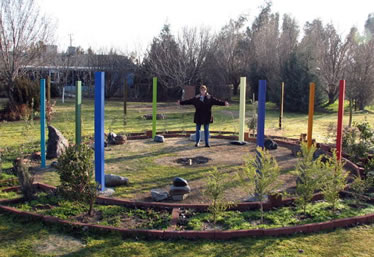The following comments were written in the summer months, but they apply to just about any time of the year where I live. I live in Northern California. I walked this morning in perfect weather. It was 68 degrees F, with clear skies.
I
usually leave my home at around 5:15 am to begin my morning walk in the
summer months. It is cool, quiet, and the air is sweet and clear in the
early morning hours. I walk about 3.6 miles. A good portion of my
walk is at an unhurried, easy, and steady pace. I use some of my
walking time for meditative or spiritual practices (Sadhana). Just the walk itself is a spiritual practice.
Before I begin my walk, I use a Calling the Quarters ritual for honoring and acknowledging the sacred space of my environment.
Enjoy
your walk as if you were drinking water when you are thirsty, or eating
a plum when you are hungry, or making love when lust overcomes you.
Today,
when you walk, try the following imaginative exercise. Some might call
it a contemplative exercise or meditative practice.
Keep your eyes open so as to walk safely, but don't focus or stare at particular objects.
Imagine
what you look like from above if you were in a balloon at various
altitudes looking down at yourself walking on the earth.
Imagine what you look like from below and in front of you if you were a small animal or insect seeing you approaching them.
Imagine
what you look like from the sides as you walk along. Vary the distance
from you as a walker and the imaginative person or animal looking at
you.
Imagine
what you look like from behind as you walk away from the viewer. What
does your backside look like from 10 meters, 100 meters?
Imagine
what you would look like walking in a different season of the year? We
are imbedded in the context of the world, other things, the ground, our
place, the season, in the sunlight - and we are seen walking in such
contexts.
Imagine
looking within your body and seeing your heart beating, blood flowing
through your arteries and veins, your lungs rising and falling, your
muscles contracting and relaxing.
If the imaginative "viewer" were at a great distance, could "It" even see you moving?
Draw
your attention to how your walking body would look from various angles
and distances. As you shift your viewing perspectives, does your mind
change?
Imagine yourself as a viewer, witness, and observer removed from your body.
Who is the "self" that can imagine
in this manner? Is it your ordinary mind, your ego, your social self,
an outpouring of your material essence; or, is the "It" or the "That"
which is self-aware that is something more profound, more expansive,
more miraculous? Are "you" doing the imagining? Is it the vast
interdependent matrix of beings that can imagine, reflect, witness
itself? Is imagining another form of seeing; or, seeing just another
form of imagining?
Play with these questions and ideas. Mull over them. Smile. Walk on.
"Wherever you are is the entry point."
